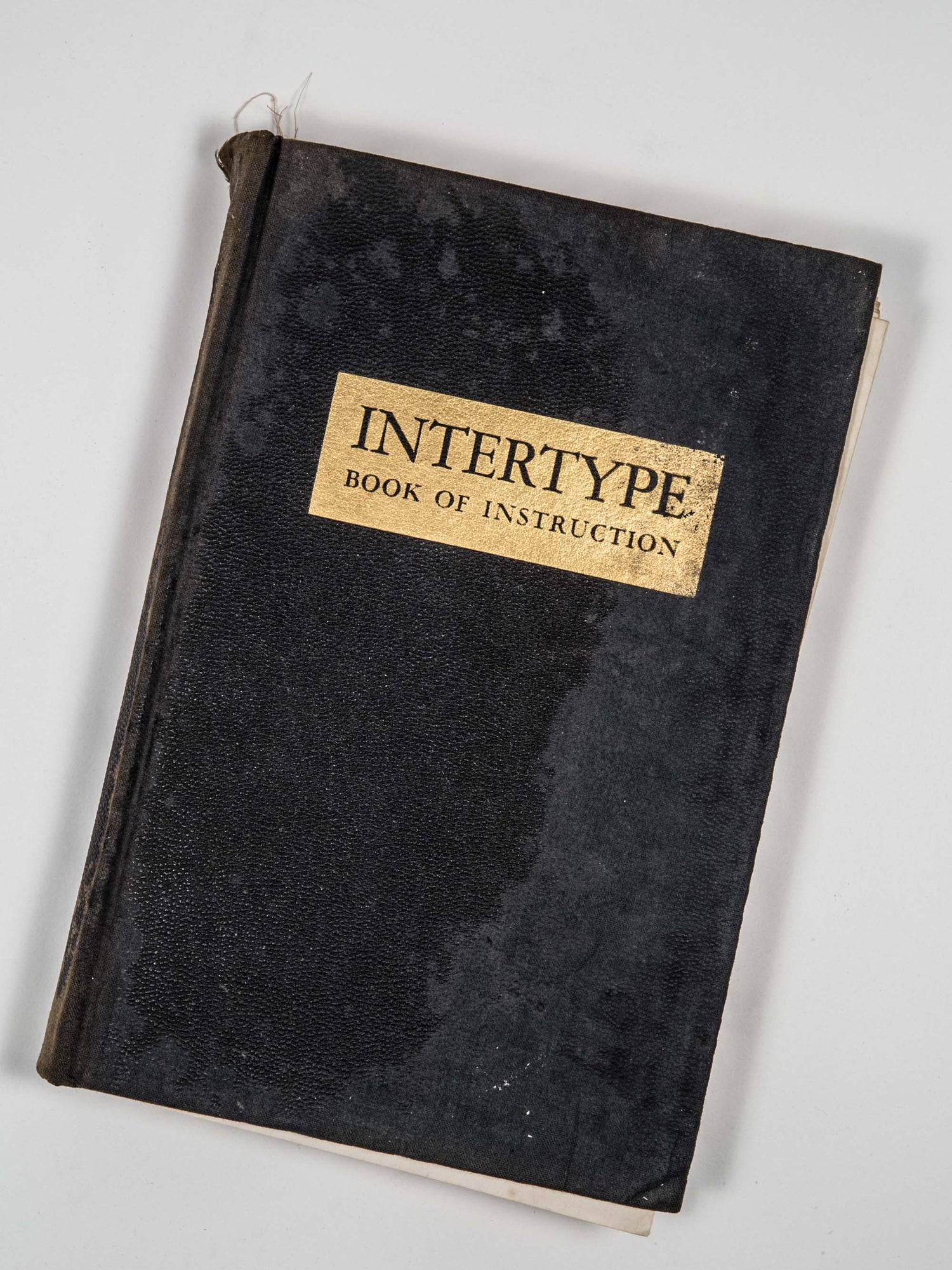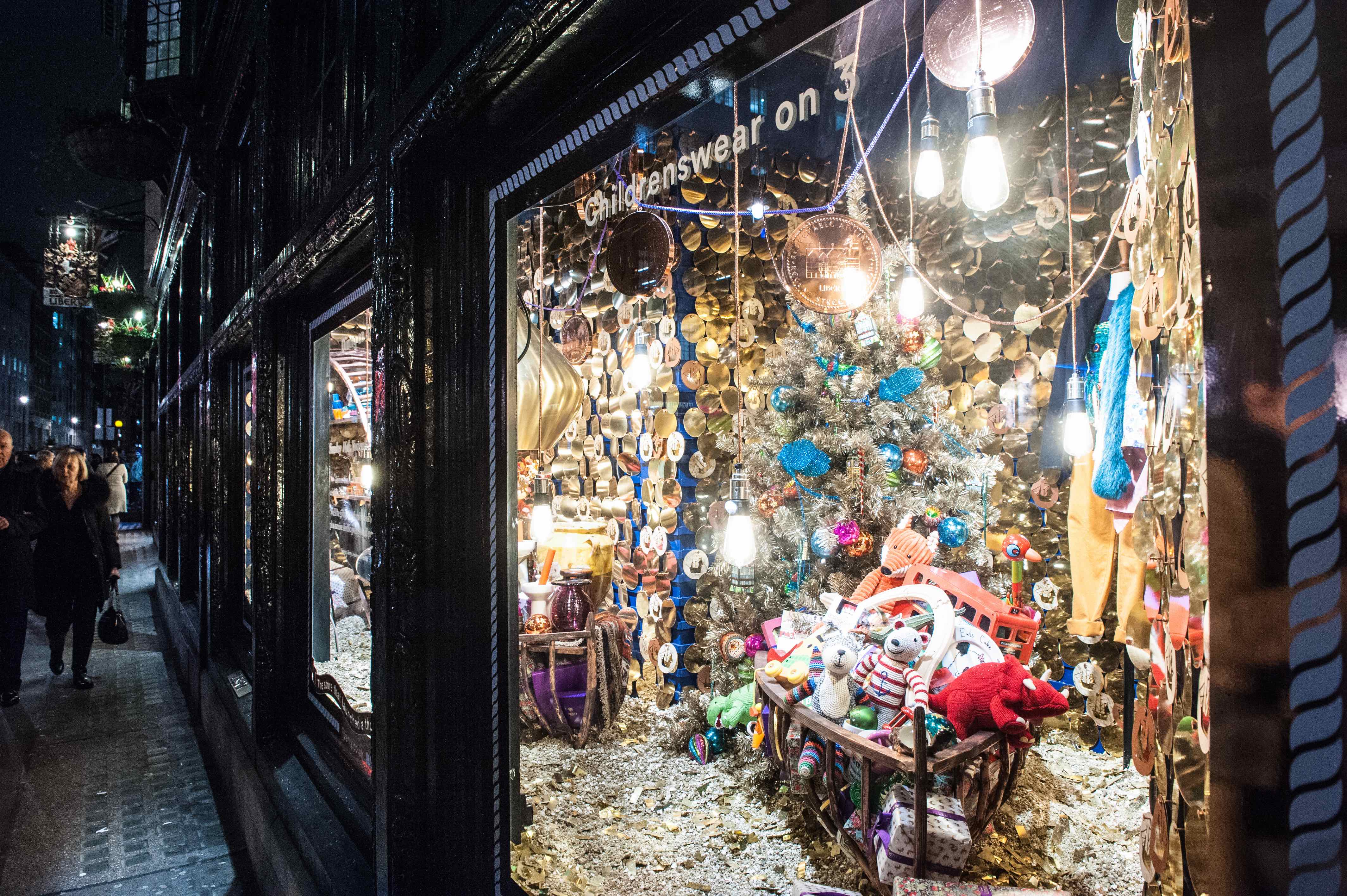We have probably the world's largest collection of operational Intertype machines.
Two of the machines are in daily use, casting type using brass matrices and molten type metal. The type is used to create personalised notebooks: enter a name or other words online and we'll set a slug of type which is used to blind deboss the cover of the notebook.
In addition to the Intertypes, we've a huge collection of printed material about the maintenance and use of the machines. We are gradually scanning and digitising the material and making it freely available online.
'The Intertype - A Book of Instruction for its Operation and General Maintenance is available below.
'The Intertype - A Book of Instruction for its Operation and General Maintenance' was published by the Intertype Limited. Intertype's UK Head Offices and works were in Slough, Buckinghamshire. The book was prepared by the Board of Engineers of Intertype Limited. It was, of course, typeset using Intertype machines in Baskerville and Garamond typefaces - the 'Book of Intertype Faces' has also been digitised for Prelogram's typography and print archive.



Index
The 'Book of Instruction for its Operation and General Maintenance' has a comprehensive index to all the various components and operations of Intertype machines. View pdf - Index part 1 View pdf - Index part 2
Introduction & Table of Contents
|
The Book of Instruction is separated into four chapters, each covering the various mechanical stages or processes of casting type using an Intertype machine. View pdf - Introduction and Table of Contents |
Chapter 1 - The Assembling Mechanism
|
The assembling mechanism works by releasing brass matrices, each of which has a character punched on it - from the magazine as the operator presses keys on the keyboard. The matrices drop onto a moving belt and are carried to the assembling elevator which is in front of the operator. When a complete line of text is assembled, the elevator is raised to the delivery slide which moves the matrices to the casting section. The elevator returns to the normal position ready for the operator to prepare the next line of type. The operation of the machine is fully automatic when the line of type is moved to the casting section. View pdf - Chapter 1 part 1 View pdf - Chapter 1 part 2 |
Chapter 2 - The Casting Mechanism
|
The line of matrices is positioned in front of a mould which is on a rotating disc with the characters punched on the matrices facing the mould. The mould and matrices are mechanically locked into place and molten type metal from a pot is pushed into the mould cavity. As the line or slug of type is cast, the mould disc rotates and an ejector blade pushes the slug out of the mould into the galley. View pdf - Chapter 2 part 1 View pdf - Chapter 2 part 2 View pdf - Chapter 2 part 3 View pdf - Chapter 2 part 4 View pdf - Chapter 2 part 5 View pdf - Chapter 2 part 6 View pdf - Chapter 2 part 7 View pdf - Chapter 2 part 8 View pdf - Chapter 2 part 9 View pdf - Chapter 2 part 10 |
Chapter 3 - The Transfer and Distributing Mechanism
|
The matrices which formed the line of type are transferred to an elevator which swings down from the top of the machine and places the matrices in a distributor box. Three rotating distributor screws move the matrices along the top of the magazine. The matrices have notches on them which correspond to gaps in the teeth of the distributor bar. When a matrix reaches reaches a point above its channel in the magazine, the gaps in its teeth mean the matrix falls into its channel, ready to to be released again when the operator presses the keys on the keyboard. View pdf - Chapter 3 part 1 View pdf - Chapter 3 part 2 View pdf - Chapter 3 part 3 View pdf - Chapter 3 part 4 View pdf - Chapter 3 part 5 View pdf - Chapter 3 part 6 View pdf - Chapter 3 part 7 View pdf - Chapter 3 part 8 View pdf - Chapter 3 part 9 |
Chapter 4 - The Magazine Frame Mechanism
|
The magazine frame equipment shifts the magazines of matrices allowing the operator to change the typeface or font. Changing the magazine may, for example, be required when changing from text to display faces and fonts.View pdf - The Assembling Mechanism part 1 View pdf - Chapter 4 part 2 View pdf - Chapter 4 part 2 View pdf - Chapter 4 part 3 View pdf - Chapter 4 part 4 View pdf - Chapter 4 part 5 View pdf - Chapter 4 part 6 View pdf - Chapter 4 part 7 View pdf - Chapter 4 part 1 View pdf - Chapter 4 part 1 View pdf - Chapter 4 part 1 |







Leave a comment
This site is protected by hCaptcha and the hCaptcha Privacy Policy and Terms of Service apply.